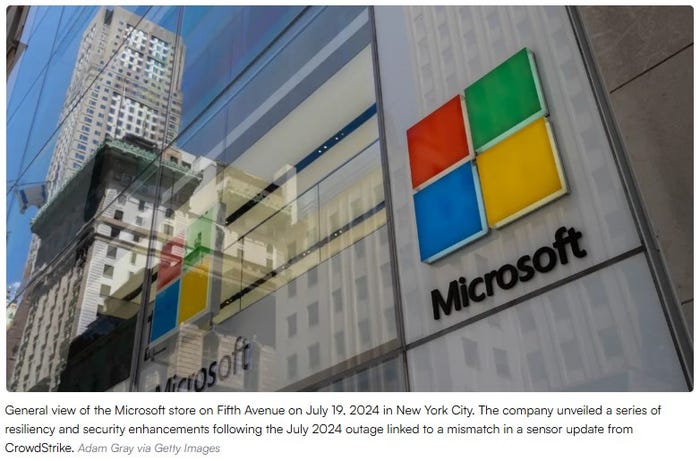What a difference a decade makes
Public-safety communications in the Big Apple are much improved since the terrorist attacks of 9/11.
May 1, 2011
The Fire Department of New York (FDNY) was dogged by serious radio communications problems during and after the 9/11 terrorist attacks. Some of the problems were caused by limited in-building coverage within the World Trade Center. Others were caused by the equipment being used. Still other issues were caused by the devastation that the attacks caused.
“The impact of two planes crashing into the towers compromised some of the communications infrastructure within the towers, with the complexity and size of the incident making point-to-point communications difficult,” said FDNY Press Secretary Steve Ritea. “The destruction caused by the planes and the associated fires contributed to our inability to communicate reliably.”
Since 9/11, the FDNY has taken substantial steps to improve its radio communications systems.
Although the magnitude of the attacks was far beyond what any agency can plan for, the FDNY is better equipped to handle large-scale incidents today based upon the enhancements, upgrades and training that have ensued in the decade that followed, Ritea said.
The FDNY’s improvements began with its operations center. Housed in departmental headquarters in Brooklyn, the center provides centralized command and control, and is interconnected with all other major public-safety agencies, including the New York Police Department (NYPD) and the Port Authority of New York and New Jersey (PATH). The center not only can coordinate operations with other departments, but it can tap into their radio communications. The center also is able to view live video feeds from the NYPD and local media outlets, access digital photos from the city’s department of transportation, and hold live videoconferences with other command centers. None of these capabilities were available to the FDNY pre-9/11.
The next improvements concern the department’s portable radios. The legacy Motorola VHF Saber analog radios have been replaced with the vendor’s UHF analog XTS-3500 radios, which have access to an increased number of frequencies, including eight interoperability channels that can be used to connect to EMS and the NYPD.
“The UHF radios deployed to fire include unit ID and emergency message sequencing, as well as a unique tone set as an audio ‘beacon’ tone,” Ritea said. The radios also offer 2W or 5W transmission power — depending upon the channel selected — compared with the 1W offered by the legacy radios, he said.
SIDEBAR: Other FDNY communications improvements
Meanwhile, to deal with the issue of in-building coverage, high-power Kenwood UHF TK8150 portables have been issued to all fire divisions and battalions, as well as EMS. The radios are capable of transmitting at 45W, according to Ritea.
To enhance interoperability — a big issue in the aftermath of the terrorist attacks — the FDNY has purchased Raytheon ACU-1000 interoperability gateways, which patch together radios operating on incompatible systems. “This allows for ad-hoc interconnection to other agencies, no matter what system or band they operate on,” Ritea said. The ACU-1000s have been installed in the FDNY’s two mobile command centers and added to the department’s two field communication kits.
A big boost to New York’s overall first-responder communications has been the addition of a second EMS citywide radio frequency in 2004, which provides additional dispatch capability for the FDNY and other departments. The FDNY also increased its roster of cross-band repeaters from nine to 13 units; has deployed in its roving response vehicle radios that accommodate up to six talkgroups in order to coordinate response needs without tying up dispatch resources; and has established portable radio caches for rapid deployment as needed.
Regarding broadband data, the FDNY now is connected to the New York City Wireless Network (NYCWiN). Launched by the city’s Department of Information Technology and Telecommunications (DoITT) in 2009, NYCWiN is a high-speed, mobile data network that stretches across 300 square miles and five boroughs. The government-only broadband network consists of 377 network sites, and is designed to ensure first responders reliable and secure access during multijurisdictional emergencies. That’s something that wasn’t available during 9/11, when the city’s commercial wireless networks were overloaded by consumer traffic.
The system, which operates on 2.5 GHz spectrum leased from the Brooklyn Archdiocese, allows for multiple levels of prioritization, so critical users are guaranteed access and bandwidth when they need it, For instance, during a fire, a first responder would have access and bandwidth priority over a fire inspector. In addition, the network is built with multiple levels of redundancy, including backup battery and generator power, redundant 24-hour operations centers, and microwave and ground-based backhaul connectivity.
The NYPD also uses NYCWiN, as do 20 other city agencies. For example, police detectives now are able to execute myriad data queries from a crime scene; previously, they had to leave the scene and return to the station to perform such tasks, which would waste valuable time.
The improvement in the data capabilities available today through NYCWiN compared to a decade ago “can’t be underestimated,” said Steve Harte, the associate commissioner for DoITT, who spoke last month at a conference presented by the New York State Association of Chiefs of Police. Sponsored by Eastern Communications — a two-way radio dealer in Long Island City, N.Y., and two-way radio vendor Harris — the conference was attended by about 200 area chiefs and explored how public-safety communications have advanced on federal, state and local levels since 9/11.
According to Harte, the city’s previous data capability — provided by commercial wireless carrier Verizon — was limited to text communications. With the advent of NYCWiN, city agencies can access a much wider array of databases and can access higher-bandwidth applications, such as mug shots and streaming video.
“Essentially, what we’ve created is a remote office in the vehicle,” Harte said. “The ability to create data centers on wheels, as if you were sitting in front of your office desktop, allows personnel to be in the field more and increases productivity. The speed of this network is 100 times faster than the [previous] capability. We have deployed a very robust and resilient network throughout the five boroughs of New York City.”
One thing that hasn’t changed is the legacy UHF conventional system that the NYPD uses for voice communications, a system that has been in place for decades. The reason for that is simple, according to Charles Dowd, NYPD deputy chief in charge of communications: if something isn’t broken, there’s no need to fix it. According to Dowd, the system provides excellent in-building coverage and is highly reliable.
“Let’s be clear on this — on 9/11, the police’s operability was excellent,” Dowd said. “If you look at the studies, such as the 9/11 Commission report and the McKinsey report, which were done independently of the city, they showed that the police radio system worked. That’s the point we’re trying to drive home [regarding the proposed nationwide wireless broadband network for first responders] — if you build it to a public-safety grade of service, when there’s a crisis, the system will function and perform.”
Any problems the police radio system encountered in the aftermath of the 9/11 attacks concerned the ability to communicate with other city agencies, particularly the fire department, according to Dowd.
“The struggle was on the interoperability side, and that’s a function of a couple of things,” he said. “It’s a function of making sure that everyone’s involved from an incident-management perspective — that why NIMS is so important. There’s nothing better for interoperability than having a command post where everybody is face to face and solving problems together.”
Dowd added that other “incremental” advances have been made, including the designation of frequencies in the city and surrounding counties for command-and-control activities.
“The fire department used to be on VHF, but now that they’re on UHF, we can interoperate for command and control,” Dowd said. “For instance, every time there’s a two-alarm fire or above in the city of New York, we activate an interoperability channel. It’s always up and running, but we notify the police and fire commanders that it’s available to them. The Port Authority and MTA [Metropolitan Transit Authority, which oversees the city’s subway system and several commuter rail lines] also are on it.”
With reporting by Mary Rose Roberts.
Related stories:



